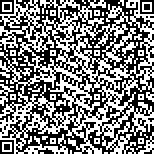王赛华,熊键,高李侠,等.徒手呼吸训练干预脑卒中后吞咽功能障碍患者的疗效观察[J].中华物理医学与康复杂志,2019,41(10):735-739
扫码阅读全文

|
| 徒手呼吸训练干预脑卒中后吞咽功能障碍患者的疗效观察 |
|
| |
| DOI:DOI:10.3760/cma.j.issn.0254-1424.2019.10.004 |
| 中文关键词: 呼吸训练 脑卒中 吞咽障碍 |
| 英文关键词: Respiratory training Stroke Deglutition disorders |
| 基金项目:湖北省自然科学基金一般项目(2012FFB05801) |
|
| 摘要点击次数: 6284 |
| 全文下载次数: 6630 |
| 中文摘要: |
| 目的 观察在常规康复治疗的基础上配合徒手呼吸训练治疗脑卒中后吞咽功能障碍的疗效。 方法 选取2017年1月至2018年6月期间在武汉市第一医院就诊且符合入选标准的脑卒中后伴吞咽功能障碍患者48例,按照随机区组法分为观察组与对照组,各24例。2组患者均接受脑卒中后常规康复治疗,包括运动功能训练、作业活动训练、物理因子治疗和吞咽功能训练等,观察组在常规康复治疗的基础上增加徒手呼吸功能训练,主要包括咳嗽声门练习、缩唇呼吸训练、胸廓活动训练、腹肌收缩与放松练习、腹式呼吸训练和腹式呼吸强化训练等。2组患者观察周期均为6周。评价2组患者治疗前、治疗6周后(治疗后)肺功能指标[最长呼气时间、第一秒用力呼气容积(FEV1)、用力肺活量(FVC)]最大吸气压(PImax)、洼田饮水试验(KDWT)、标准吞咽功能评定(SSA)、功能性吞咽困难评分(FDS)。 结果 治疗后,观察组患者的最长呼气时间[(6.00±0.77)s]、FEV1[(3.43±0.30)L]、FVC[(3.90±0.17)L]、PImax[(63.53±10.76)cmH2O]均高于组内治疗前和对照组治疗后,差异均具有统计学意义(P<0.05)。治疗后,观察组的KDWT疗效等级与对照组比较,差异无统计学意义(P>0.05),但观察组的KDWT显效率高于对照组。治疗后,观察组患者的SSA和FDS评分显著低于组内治疗前和对照组治疗后,差异均有统计学意义(P<0.05)。 结论 在常规康复的基础上辅以徒手呼吸训练可显著改善脑卒中患者的呼吸功能,并有效地促进患者吞咽功能的恢复。 |
| 英文摘要: |
| Objective To observe any curative effect on dysphagia of freehand respiratory training applied to hemiplegic stroke survivors. Methods Forty-eight hospitalized, hemiplegic stroke survivors were randomly divided into an observation group and a control group, each of 24. Both groups received routine stroke rehabilitation, including motor function training, exercise training, physical therapy and swallowing training. The observation group was additionally provided with barehanded breathing function training, mainly consisting of cough glottis exercise, lip constriction aspiration exercise, chest movement exercise, abdominal muscle contraction and relaxation exercise, as well as abdominal aspiration training. The intervention lasted for 6 weeks for both groups. Before and after the intervention the maximum breathing time, first and second forced volume (FEV1), forced vital capacity (FVC), maximum inspiratory pressure (PImax), standardized swallowing assessment (SSA), Kubota drinking water test (KDWT) and functional dysphagia scale (FDS) scoring were quantified for both groups. Results There was no significant difference between the two groups′ averages on any of the measurements before the intervention. Afterward, however, the average maximal breathing time, FEV1, FVC, and PImax of the observation group were all significantly higher than before the intervention and significantly higher than those of the control group. After treatment, the observation group′s average KDWT efficiency was not, however, significantly better than that of the control group. Moreover, after the treatment the average SSA and FDS of the observation group were significantly lower than those of the control group, as well as significantly better than before the treatment. Conclusion Barehanded breathing function training can supplement routine rehabilitation to significantly improve the breathing of stroke survivors. |
|
查看全文
查看/发表评论 下载PDF阅读器 |
| 关闭 |
|
|
|